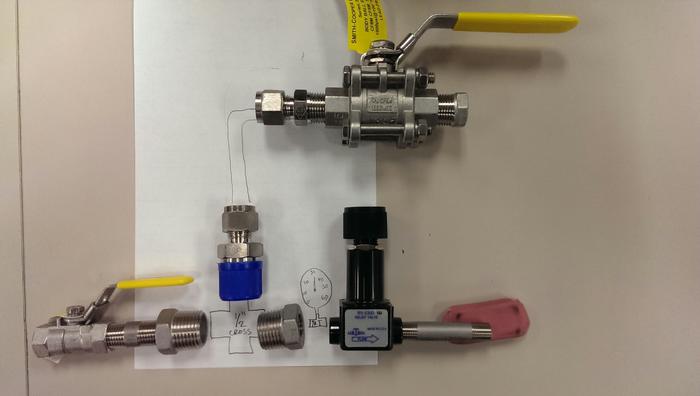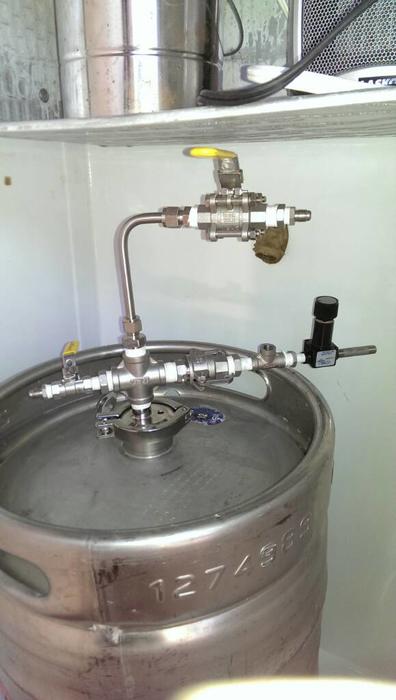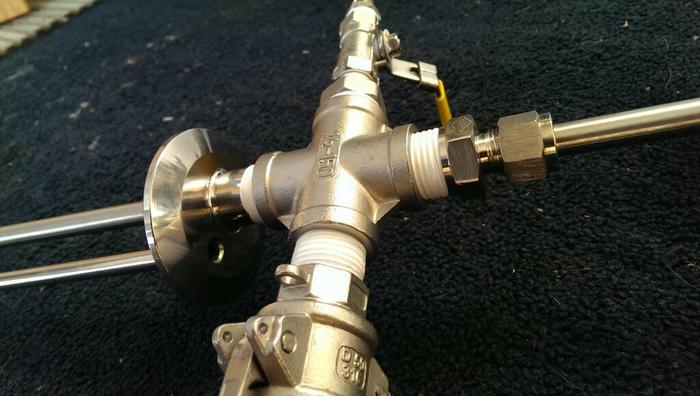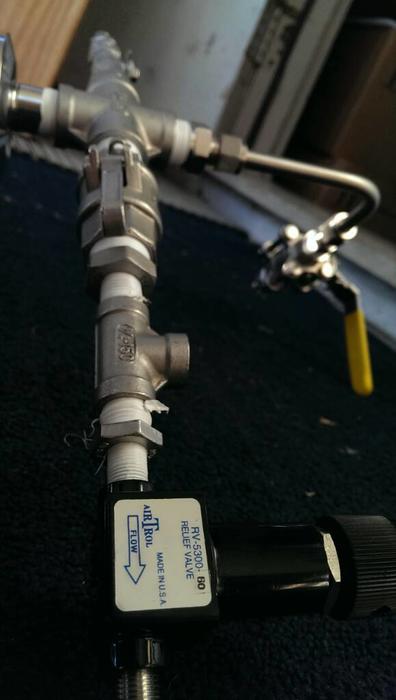Kevin, I can't see that your setup would do what I mentioned unless you picked up your spunding setup allowing anything to go back in the fermentor. I just find it hard to believe that that many kegs would taint the brews you have done. This makes me think either: 1) something is happening during your fermentation (ie pressure ramp too high too fast making the yeast through off flavors, which I don't see from your procedures posted) or 2) you are tainted prior to entering the fermentor either with transfer tubing, chiller, or airborne during your chill. I really don't know! You may have to wait until you try your carboy beer to really tell.
I appreciate you staying with me here -
I am still banging my head on the wall.
My last batch was 12 gallons of Kolsch split into 2 6.5 carboys, made on 7/7.
One was put in my ferment frige and one was put into a swamp cooler.
I racked off both carboys last night, both tasted great, no sour wangs that I keep tasting in my keg fermented batches. There was a slight difference between the 2 since the swamp cooler got a bit hotter than the frige fermented one, so there was a tiny bit more Kolsch ester in the one that got hotter, But again, I expect no issues... more to come after it ages a week and carbs up.
Oh Yeah....I screwed up the recipe for this Kolsch and made it for 14 gallons but it was actually 12 and thus I made a gallon of 55 IBU hop juice on 7/10 to bump up the IBU and drop the SG, but even after pouring more stuff back into both fermenters, it taste good.
I also made 12 gallons of Octoberfest on 7/7 and started with a bubbler, I tasted that batch last night and I am not sure if the malt is not hiding the sour wang ....I think it might be more to come.
But... the BUD clone I made on 7/3 has the wang and slight acid/vinegar smell worse than the slight wang I have in my Munich Helles from 6/28.
I know it seems crazy to think I have 4 kegs now that I can not get clean.
The BUD keg was a new to me keg, that was soaked in my same regime of 8 gallons of boiling PBW, 8 oz pbw in the mix and stayed in there for about a week.
I kept flipping and rolling the keg 2-3 times a day.
I keep emailing/PM others about their setups... I am at a loss why I can not get them clean.
I am now going to throw more money at the problem and will put on some 8" TC fitting on my kegs to get my arm in there and clean them.
I will also be making my light lagers again in Carboys to try and narrow things down, I had none of these problems in the 20 plus batches made the same way I do today, when I used Carboys.
Also on the Munich Helles batch I had the yeast starter made a few weeks in advance, I drank a class of the starter beer after it was in the frige for 2 weeks, it was great and taste nothing like what I have now.
Also I have an immersion chiller that I put in the boiling wort 20 minutes before the boil is up. I have a short 2 foot hose that dumps from BK to fermenter that is cleaned with Starsan and water every time I touch it.
All that said, I am thinking this is all fermenter related.
Keep the ideas coming!
thanks Kevin


































![Craft A Brew - Safale BE-256 Yeast - Fermentis - Belgian Ale Dry Yeast - For Belgian & Strong Ales - Ingredients for Home Brewing - Beer Making Supplies - [3 Pack]](https://m.media-amazon.com/images/I/51bcKEwQmWL._SL500_.jpg)






























